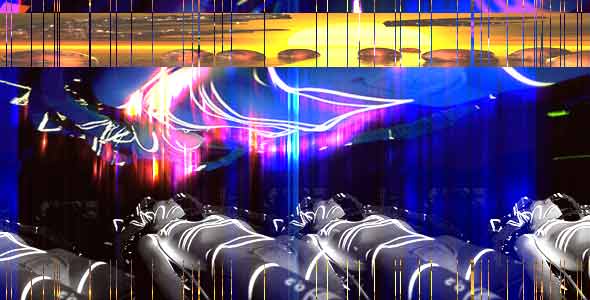BY LETTER
Technology Type or Material
Terragen technology can be generally divided into five primary types, depending on the material basis or building blocks that it uses. These are:
Drytech/Hylotech: manipulation of inanimate and inorganic matter
Biotech: modification or creation of living organisms Terragen or otherwise; one aspect of this, gengineering, is large enough that it is often given its own category
Syntech: technologies that integrate biotech and drytech
Infotech: technologies entirely in the realm of information and virtuality
Spacetime tech: modifications to the structure and form of space and time
These are not neat, mutually exclusive classifications. Each category merges into the next: utility fog for example is intermediate between hylo and info tech; and many forms of nano and cybernetic technology may equally be considered inanimate/inorganic and alive/organic. The large category of gengineering is simultaneously infotech and biotech. To take another example, cyborgs rely equally on drytech and biotech. As for the greater hyperturings and Archailects, moon-sized "living" hylonano, bionano and synano nodes of seemingly infinite complexity, using advanced infotech, are essential to the very existence of a midrange transapient, and the "Jupiter-brains" of the highest toposophic levels integrate metric tech as well.
Ultimately technology converges in a single omega, and even nootech and apotheonics depend on the culmination of infotech, biotech, syntech, and drytech, and in some cases metric tech as well. Some philosophers even add a further category, psitech, based on the interaction between subjectivity/consciousness and the other forms of tech, as well as siddhi amplification via postulated transapientech devices. The impossibility of reproducing these phenomena in a way that can be measured and falsified leads some to reject them; they belong more properly among the esoterics.
Likewise, memetics has been called idea-engineering, and it has been plausibly argued that it is also a technology that manipulates nature (in this case the collectivity of ideas). More critical philosophers point out that it is difficult to justify memetics as a whole as technology as such, except in a poetic sense, as "the technology of persuasion". Often memetics is something that is itself alive in the world of ideas, although memetic engineering can plausibly be considered a branch of technology, probably of infotech rather than a new category.
However one defines technology, no one can deny that it is the Terragen expertise in this area that has given our civilization mastery of the known galaxy. Some kalyptics claim that there are dramatically more advanced technological civilizations beyond the periphery, but if so they have yet to be discovered, even by the Argus Array. Those rare ultratech xenosophont civilizations that are known, such as the Meistersingers, are different from Terragens in technology, but (apparently) not superior, and even the most astonishing clarketech alien artifacts are no more spectacular than the clarketech items created by Terragen archai.
Sub-Topics
| Drytech/Hylotech | Gengineering | Nanotech |
| Organic/Biotech | Space-Time Engineering | Syntech/Synanotech |
| Virtual/Infotech |
Articles
- Dumbdo - Text by M. Alan Kazlev
Dumbdowned tech; ultratech that can be used by an untrained human baseline (or equivalent) without risk. - Femtotechnology / Femtotech - Text by Stephen Inniss
An imaginary technology cluster. Users of the word imagine a technology or set of technologies that rearranges matter on the femtoscale with something analogous to nanotechnology's scope and precision. - Picotechnology / Picotech - Text by Stephen Inniss
An imaginary technology cluster. Users of the word imagine a technology or set of technologies that rearranges matter on the picoscale with something analogous to nanotechnology's scope and precision.
Development Notes
Text by M. Alan Kazlev
modified by Stephen Inniss
Initially published on 06 February 2002.
modified by Stephen Inniss
Initially published on 06 February 2002.
Additional Information







